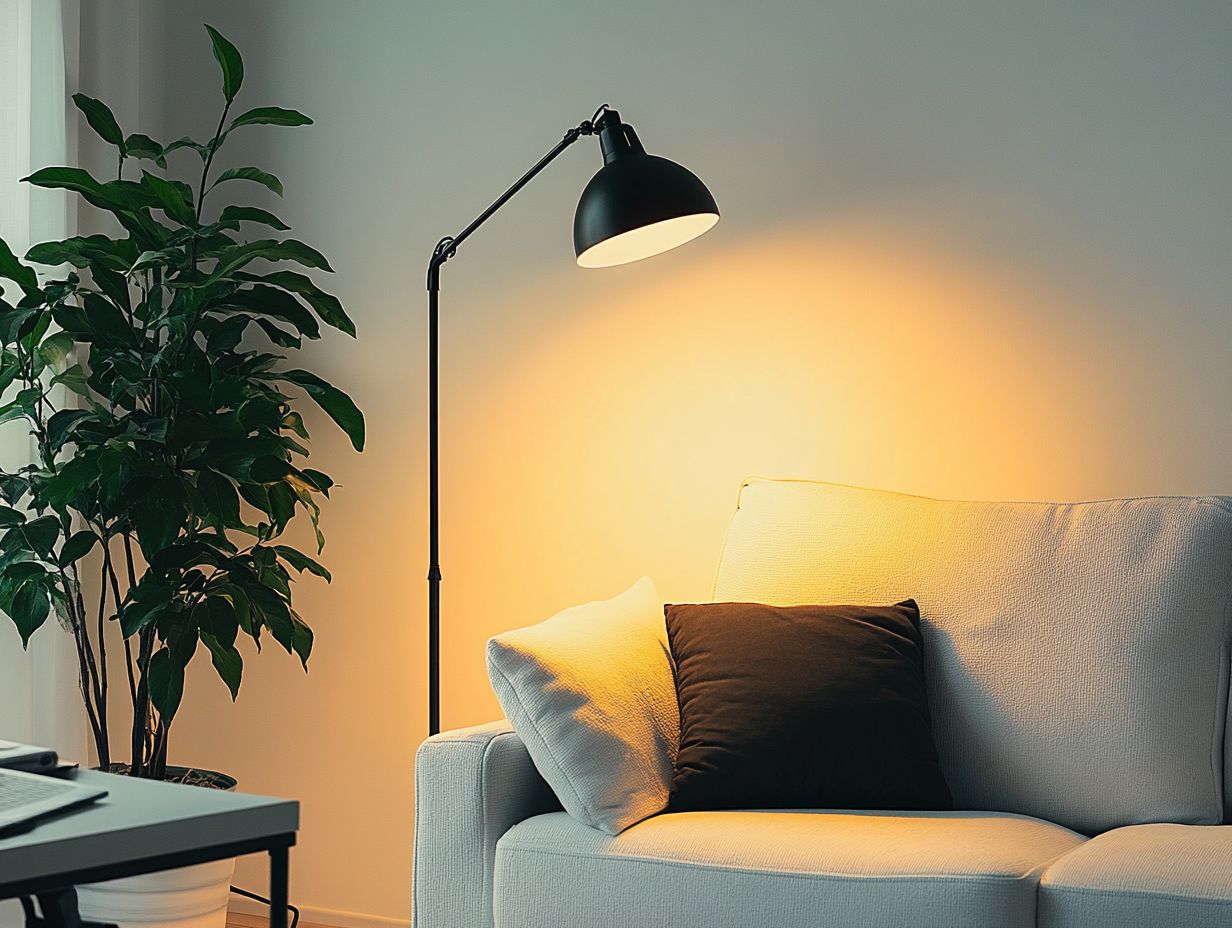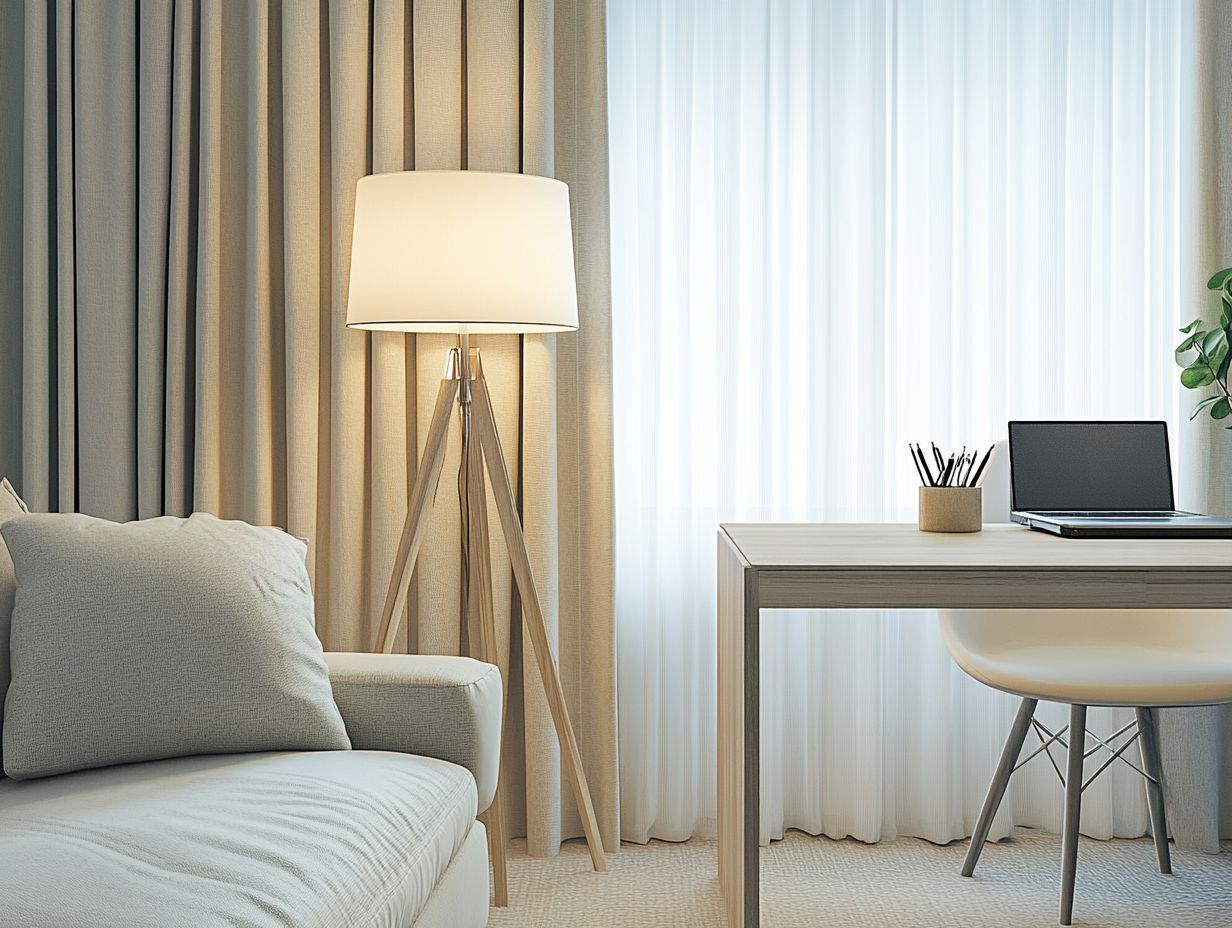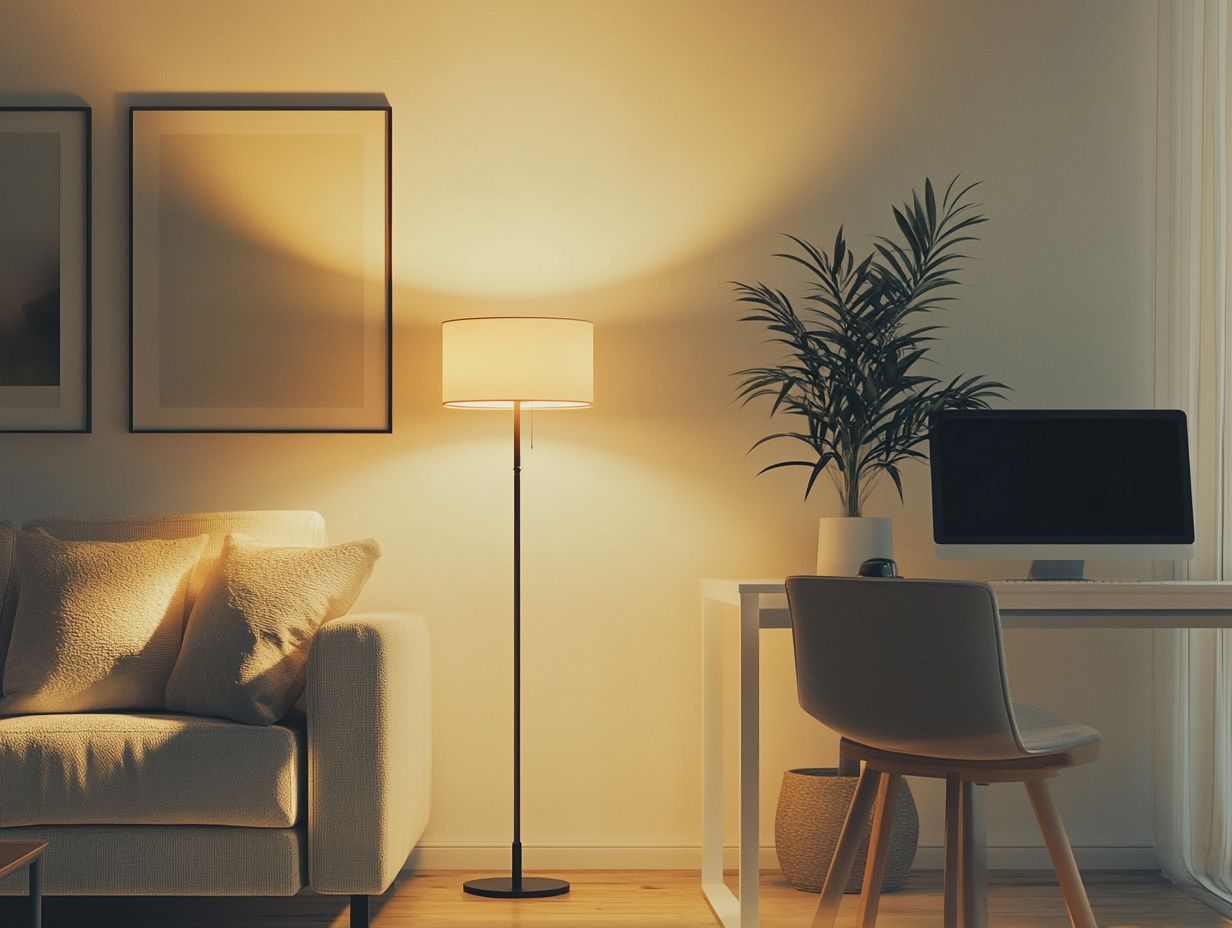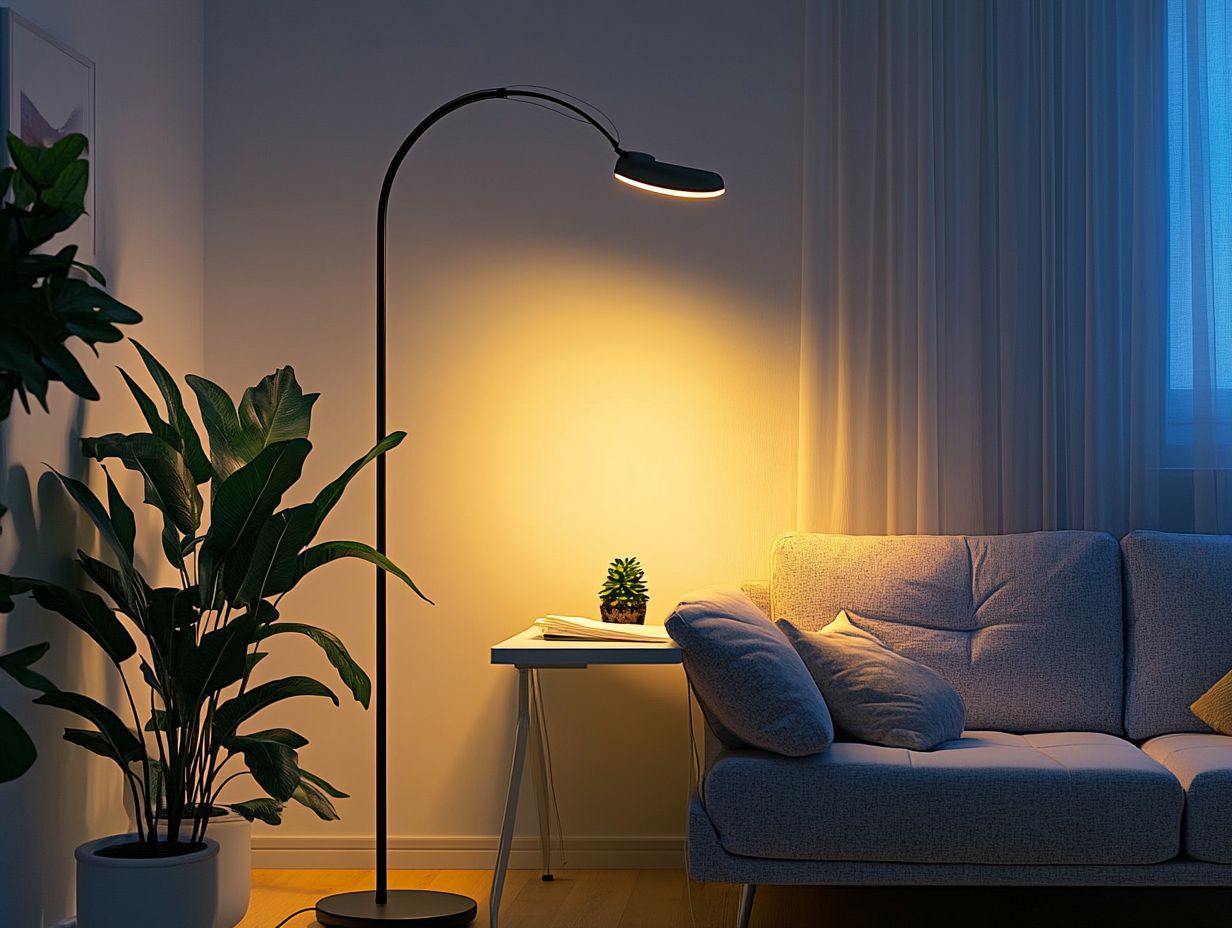Lighting design plays a vital role in shaping both the aesthetics and functionality of any environment, effectively integrating elements of modern lighting and vintage lighting to create appealing spaces.
Whether it is a comfortable living room or a productive workspace, the appropriate lighting can significantly enhance the overall ambiance while addressing practical requirements.
This article examines the essential factors to consider when balancing beauty and utility in lighting design, focusing on the importance of achieving a design balance that enhances user experience.
From developing a customized lighting plan to integrating stylish fixtures, we will provide guidance on maximizing both visual appeal and energy efficiency, ensuring that your spaces are optimized in every respect.
Understanding the Importance of Lighting Design

Lighting design is a crucial element of interior design that significantly influences both aesthetics and functionality, effectively serving as a bridge between form and purpose. Adequate lighting enhances the visual appeal of a space while also addressing practical requirements.
By recognizing the importance of various lighting techniques, such as ambient lighting and task lighting, one can create an environment that embodies not only style but also comfort and usability, achieving a balance between artistic expression and everyday practicality.
The careful integration of ambient, task, and accent lighting can enhance user experience, resulting in spaces that are both visually appealing and functional.
The Impact of Lighting on Aesthetics and Functionality
Lighting plays a crucial role in shaping both the aesthetics and functionality of any space, influencing aspects such as mood and usability. It enhances visual appeal through the strategic application of color temperature and careful selection of fixtures, while also ensuring adequate illumination levels for everyday activities.
The emotional impact of lighting is significant, as it establishes ambiance and can dramatically alter perceptions of space and design elements. Understanding the balance between aesthetics and functionality is essential for creating a harmonious environment.
The choice between warm and cool lighting can evoke distinct feelings of comfort or focus, making it imperative to consider the specific requirements of different areas within a home or office. For instance, a cozy, warm light is ideal for a living room, promoting relaxation and fostering social interactions, whereas bright, cooler tones are more appropriate for workspaces that require concentration.
Specialized fixtures, such as pendant lights and decorative lighting, can serve as focal points, enhancing decor while providing necessary task illumination.
By effectively combining various types of lighting, one can not only improve usability but also create a visually appealing environment that aligns with personal style and enhances the overall user experience.
Factors to Consider in Balancing Aesthetics and Functionality
Achieving an effective balance between aesthetics and functionality in lighting design requires careful consideration of several critical factors, including space optimization and the meticulous selection of fixtures. Designers must take into account the intended use of each area, ensuring that the lighting not only enhances visual appeal but also fulfills practical requirements.
This necessitates a comprehensive understanding of spatial relationships and the ways in which varying illumination levels impact user engagement.
Furthermore, it is essential to navigate design constraints and challenges to produce a cohesive appearance that harmonizes form with function.
Space and Purpose

The relationship between space and purpose is a critical consideration in lighting design, as the functionality of a room dictates the type and intensity of lighting required. Each area serves a specific function, whether task-oriented or for relaxation, necessitating a tailored approach to lighting solutions.
This understanding facilitates effective space optimization, ensuring that lighting enhances usability and complements the overall dynamics of the room. By identifying focal points and planning accordingly, one can achieve a well-lit environment that addresses both aesthetic and functional needs.
For example, kitchens typically benefit from bright task lighting to facilitate food preparation, while living rooms may require softer, ambient lighting to create a cozy atmosphere. Bedrooms, conversely, may necessitate adjustable lighting to accommodate various activities, from reading to unwinding.
By strategically placing fixtures and utilizing dimmers, individuals can achieve an optimal balance of light in each space.
Incorporating natural light through windows, along with strategic artificial light placement, can significantly enhance mood and energy levels, demonstrating that thoughtful lighting design has the potential to transform an ordinary room into an exceptional and inviting environment.
Lighting Fixtures and Placement
The selection and placement of lighting fixtures are critical elements of effective lighting design, significantly impacting both aesthetics and comfort within a space. The choice of appropriate fixtures, such as pendants, sconces, or recessed lights, influences not only the quality of illumination but also the interaction among various design elements.
Strategic placement establishes a visual hierarchy that directs the eye and enhances the overall spatial aesthetics, ensuring that each area appears inviting and thoughtfully designed.
For example, pendant lights are particularly well-suited for kitchen islands, providing focused illumination for food preparation while contributing to the overall style of the space. Conversely, wall sconces are ideal for hallways, offering a gentle glow that facilitates seamless transitions between rooms. Meanwhile, recessed lights excel in living areas, highlighting artwork and architectural features while preserving a clean ceiling line.
Each fixture serves a distinct purpose, and their careful integration can elevate both functionality and beauty, enhancing the overall design identity of the space, transforming ordinary environments into extraordinary settings.
Creating a Lighting Plan
Creating a lighting plan is an essential step in achieving the desired ambiance and functionality in any space, necessitating a thorough understanding of lighting requirements and design principles.
This process entails assessing the specific needs of each area, considering both the intended mood and the practical uses of the space, including the role of light dynamics in achieving harmony.
Through strategic space planning, designers can ensure that the lighting plan is aligned with both aesthetic objectives and functional necessities, ultimately resulting in an environment that is cohesive and inviting.
Identifying Key Areas and Lighting Needs

Identifying key areas and specific lighting needs is essential in developing an effective lighting plan that enhances both functionality and aesthetics. Different spaces serve various purposes, necessitating distinct lighting solutions tailored to their unique characteristics.
A comprehensive understanding of the activities that will take place in each area can significantly inform the lighting strategy. For example, in a kitchen, bright task lighting is crucial for food preparation, while softer ambient lighting can foster a welcoming atmosphere for dining. Conversely, a study area may require focused lighting to enhance concentration.
By recognizing these specific requirements, it is possible to create a harmonious balance that not only addresses practical needs but also complements the overall design aesthetic, ensuring that each area is well-lit without compromising the visual appeal of the space.
Choosing the Right Lighting Techniques
Selecting the appropriate lighting techniques is essential for achieving the desired ambiance and functionality within a space. This requires a careful integration of ambient, task, and accent lighting.
A comprehensive understanding of how each lighting type interacts within the environment can lead to remarkable effects. Ambient lighting, typically provided by ceiling fixtures or wall sconces, establishes a warm and inviting atmosphere. In contrast, task lighting can be effectively utilized through under-cabinet lights in kitchens or desk lamps in offices to enhance productivity. Accent lighting, which includes spotlights or track lighting, serves to highlight artwork or design features, thereby adding depth and character to the space.
When these techniques are skillfully combined, the outcome is a balanced environment that not only fulfills practical requirements but also enhances aesthetic appeal through effective glare control and light quality, rendering the space both inviting and inspiring.
Incorporating Aesthetics into Your Lighting Design
Incorporating aesthetics into lighting design elevates it from a mere functional necessity to a significant design element that enhances the overall ambiance of a space. This process involves selecting fixtures and techniques that not only provide adequate illumination but also complement the style and character of the environment.
By thoughtfully considering aspects such as color harmony, texture, and mood lighting, designers can create visually engaging settings that resonate emotionally and sensorially with users.
Using Lighting as a Design Element

Utilizing lighting as a design element facilitates creative expression that extends beyond mere functionality, establishing it as a crucial component of visual storytelling within a space. Thoughtfully designed lighting not only enhances aesthetics but also fosters comfort, directs the viewer’s attention, and highlights focal points within the environment. This approach enriches the user experience by contributing to the emotional resonance and overall narrative of the space.
By incorporating various types of lighting—such as ambient, task, and accent lighting—designers can adeptly create atmospheres that align with the intended message of the environment. Whether illuminating a cozy corner in a café or spotlighting artwork in a gallery, the strategic application of light enhances visual appeal and influences how individuals engage with their surroundings.
This multifaceted role of lighting can evoke a range of emotions, from inviting warmth to creating stark contrasts, ultimately enriching the narrative woven into the architecture and design. When effective lighting is integrated seamlessly with other design elements, it has the potential to evoke emotions that transform a simple space into a compelling narrative.
Choosing the Right Aesthetic Style
Selecting the appropriate aesthetic style for lighting design is essential for achieving a cohesive appearance that reflects individual taste and enhances the architectural features of the space. Whether one chooses modern design, classic design, or minimalism, the selection of lighting fixtures and techniques should align with the overall design vision.
By thoughtfully considering elements such as color palettes, materials, and shapes, it is possible to create an atmosphere that embodies the unique character of a room. For example, a sleek, contemporary space may benefit from geometric pendant lights or LED strips that accentuate lines and contours, while a more traditional setting might require ornate chandeliers or vintage sconces that resonate with historical craftsmanship.
The critical aspect is to understand how various styles can complement one another, ensuring that each selected piece contributes to the overall narrative of the space rather than detracting from it.
Ensuring Functionality in Your Lighting Design
Ensuring functionality in lighting design is crucial to address the practical needs of users while simultaneously enhancing the overall aesthetic appeal. This requires careful consideration of factors such as usability, performance metrics, and the specific requirements of various spaces.
By prioritizing functionality in conjunction with aesthetics, designers can develop environments that are not only visually engaging but also effectively support the activities occurring within them.
Practical Considerations for Different Spaces
Practical considerations for various spaces are essential in developing an effective lighting design that enhances both functionality and aesthetics. Each type of space—whether residential, commercial, or public—has distinct requirements that influence lighting choices and layout. By comprehensively understanding these needs, designers can optimize the space while ensuring that the lighting effectively supports user experience and activities.
For example, residential areas typically benefit from warm, ambient lighting that fosters a cozy atmosphere, whereas commercial spaces often necessitate bright, focused lighting to improve productivity and visibility. In public areas, achieving a balance between safety and ambiance is critical; effective lighting can facilitate movement and enhance experiences, creating an inviting environment.
Furthermore, considerations such as energy efficiency and the integration of smart technology are becoming increasingly important, as they not only reduce costs but also promote a sustainable design approach. Understanding these varied requirements enables designers to customize solutions that address the specific needs of each setting.
Maximizing Energy Efficiency
Maximizing energy efficiency in lighting design is a critical concern in today’s environmentally conscious market, promoting sustainability while ensuring effective illumination levels. The adoption of LED technology represents a significant advancement in energy efficiency, providing longer lifespans and reduced energy consumption compared to traditional lighting sources.
By integrating energy-efficient practices into lighting design, one can significantly minimize environmental impact without compromising aesthetics or functionality.
Furthermore, embracing smart lighting systems allows users to customize illumination based on specific needs, thereby actively reducing waste. These modern technologies, in conjunction with advanced controls such as motion sensors and timers, facilitate optimal resource utilization.
Incorporating natural light through innovative architectural designs, such as skylights, can further enhance efficiency and create visually appealing environments. As lighting designers increasingly prioritize these sustainable approaches, they not only contribute to a greener future but also inspire clients to invest in energy-efficient solutions that align with their ecological values.